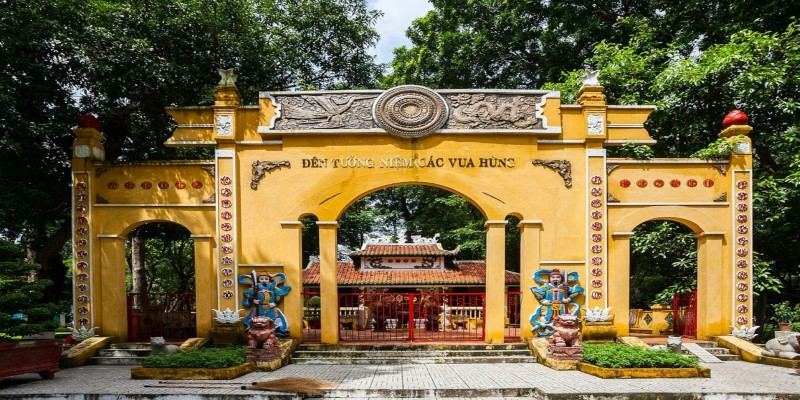A Taste of Cambodia: Exploring Khmer Food
Aug 06, 2024 By Juliana Daniel
Cambodia, a Southeast Asian gem, is renowned for its rich history, stunning landscapes, and vibrant culture. Its culinary heritage, particularly Khmer food, stands out for its unique blend of flavors, ingredients, and cooking techniques. This cuisine reflects Cambodia's history and geography, shaped by centuries of cultural exchange and innovation.
In this article, we will explore the origins, key ingredients, popular dishes, and cultural significance of Khmer food. From fragrant spices and fresh herbs to communal dining practices, Khmer cuisine offers a deep insight into Cambodian life and history, making it an essential part of the country's cultural tapestry.
Origins of Khmer Food
Historical Influences
Khmer food has a long and storied history that dates back centuries, reflecting the complex tapestry of influences that have shaped Cambodian culture over time. Influenced by neighboring countries like Thailand, Vietnam, and Laos, as well as by Chinese and French culinary traditions, Cambodian cuisine is a melting pot of flavors and techniques. Each of these influences has left its mark, creating a unique culinary identity that is distinctly Khmer.
The Khmer Empire
The Khmer Empire, which ruled much of Southeast Asia from the 9th to the 15th centuries, played a significant role in shaping the culinary landscape of the region. During this period, the empire was a hub of trade and cultural exchange, introducing new ingredients and cooking methods. The Khmer people developed sophisticated agricultural practices, including rice cultivation and extensive irrigation systems, which not only ensured food security but also laid the foundation for the country's food culture. Rice, the staple of Khmer cuisine, became central to the diet and remained a fundamental element of nearly every meal.
Geographical Diversity

Cambodia's geographical diversity, from the fertile plains and river deltas to the abundant freshwater lakes, has also significantly influenced Khmer food. The Mekong River and Tonle Sap Lake provide a wealth of freshwater fish, a primary protein source in many dishes. These natural resources have been harnessed for centuries, with techniques such as fish fermentation and the creation of prahok (a fermented fish paste) showcasing the ingenuity and adaptability of Khmer culinary practices.
Colonial Influence
The colonial period brought new dimensions to Cambodian cuisine. The French influence is evident in the use of baguettes, pt, and certain cooking techniques, which have been seamlessly integrated into traditional dishes. This blending of local and foreign elements has enriched the culinary heritage of Cambodia, making Khmer food both familiar and exotic to those who encounter it. Top of FormBottom of Form
Key Ingredients in Khmer Food
Central to Khmer food are fresh, locally sourced ingredients. Rice is a staple, often served with almost every meal. Cambodia's fertile land and abundant waterways provide a wealth of fresh produce, fish, and other seafood. Some of the key ingredients in Khmer cuisine include:
Rice: The cornerstone of Cambodian meals, rice is often served steamed, fried, or in soups and porridges.
Fish and Seafood: Freshwater fish from the Mekong River and Tonle Sap Lake, as well as oceanic fish and seafood, are integral to many dishes.
Vegetables and Herbs: Fresh vegetables like morning glory, bok choy, and water spinach, along with aromatic herbs such as lemongrass, kaffir lime leaves, and galangal, are commonly used.
Spices and Pastes: Cambodian cuisine uses a variety of spices and pastes, including prahok (fermented fish paste), kroeung (a blend of lemongrass, galangal, turmeric, and other spices), and chili.
Coconut Milk: This adds a rich, creamy texture to many curries and soups.
Popular Khmer Dishes
Khmer food is diverse and flavorful, with each dish offering a unique taste experience. Here are some of the most popular dishes that you must try when exploring Cambodian cuisine:
Amok Trey

Amok Trey is perhaps the most famous Cambodian dish. This traditional Khmer fish curry is made with freshwater fish, coconut milk, and a blend of spices known as kroeung. The mixture is often steamed in banana leaves, giving it a distinct flavor and presentation. Amok Trey is typically served with rice and is a must-try for anyone visiting Cambodia.
Bai Sach Chrouk
Bai Sach Chrouk, or pork and rice, is a beloved breakfast dish in Cambodia. It consists of thinly sliced pork marinated in garlic and coconut milk, grilled to perfection, and served over a bed of steamed rice. Often accompanied by pickled vegetables and a side of chicken broth, this dish is a simple yet delicious way to start the day.
Kuy Teav
Kuy Teav is a popular noodle soup made from pork or beef bones, rice noodles, and a variety of herbs and garnishes. It is typically enjoyed for breakfast but can be found at any time of the day. The broth is light yet flavorful, and the dish is often customized with toppings like lime, chili, and fresh herbs.
Lok Lak
Lok Lak is a stir-fried beef dish marinated in a savory sauce made from soy sauce, oyster sauce, and black pepper. The beef is cooked quickly over high heat and served with a side of fresh vegetables, rice, and a dipping sauce made from lime juice and black pepper. It is a delicious and hearty meal that showcases the flavors of Khmer cuisine.
Samlor Korkor
Samlor Korkor, also known as Khmer curry, is a traditional Cambodian soup that has been enjoyed for centuries. Made with a base of kroeung paste, it features a variety of vegetables, such as eggplant, green beans, and pumpkin, along with meat or fish. The soup is thickened with toasted rice powder, giving it a unique texture and flavor.
Conclusion
Cambodia's culinary landscape is as rich and diverse as its history. Khmer food offers a unique and flavorful journey into the heart of Cambodian culture. From traditional dishes like Amok Trey and Bai Sach Chrouk to the bustling street food scene, there is something to tantalize every palate.
Exploring Khmer food is not just about tasting delicious meals but also about understanding the cultural significance and history behind each dish. Every bite tells a story, reflecting the influences of ancient empires, colonial history, and the ingenuity of the Cambodian people. Whether you are a seasoned foodie or a curious traveler, the flavors of Cambodia are sure to leave a lasting impression.

J5 Top Offbeat Places to Visit in India in 2023: Things to do
If you are looking for unexplored places to visit in India, you have reached the right place. Know about your next destination with us

JPerfect Girlfriend Getaway Guide to Las Vegas
Planning a girlfriend getaway to Las Vegas? This guide covers everything you need to know, from fun activities and scenic spots to dining options and transportation tips. Discover the best tips for packing, sightseeing, shopping, and more to make your Las Vegas trip unforgettable.

J3 Days in London: The Ultimate First-Time Visitor’s Guide
Discover the best things to do in London for 3 days with our complete guide for first-time visitors. Explore iconic landmarks, hidden gems, and enjoy the city's vibrant culture.

JThe Ultimate List of Travel Essentials, Including Top-Tier Equipment for Exploring Tropical Forests
Extreme heat, humidity, and precipitation make trekking in the tropics difficult. This is why we've compiled this comprehensive Jungle Trek packing list to reference before you embark on your adventure.

JWhat to Expect on Your Trip to Hawaii
Planning a trip to Hawaii? This guide offers a complete look at what to expect, from stunning landscapes and warm beaches to Hawaiian culture, food, and climate. Discover the islands' unique experiences, outdoor activities, and scenic spots, and learn how to make the most of your time in Hawaii.

JFree Things to do in Washington, D.C.
Explore the many free attractions and events available in Washington, D.C.! From visiting monuments and memorials to attending outdoor performances and festivals, find out all that this city has to offer without spending a dime.

JExploring the Green Heart of Saigon: Tao Dan Park
Find out Tao Dan Park in Ho Chi Minh City, a green lung and urban oasis offering lush landscapes, cultural experiences, and recreational activities for locals and tourists alike.

JGlorious Villas To Explore in Himachal Pradesh
Want to spend your vacations in Himachal Pradesh and planning to rent a gorgeous villa? Here, I'll give you the best entire villa tours in Himachal Pradesh.
 clearinfoy
clearinfoy